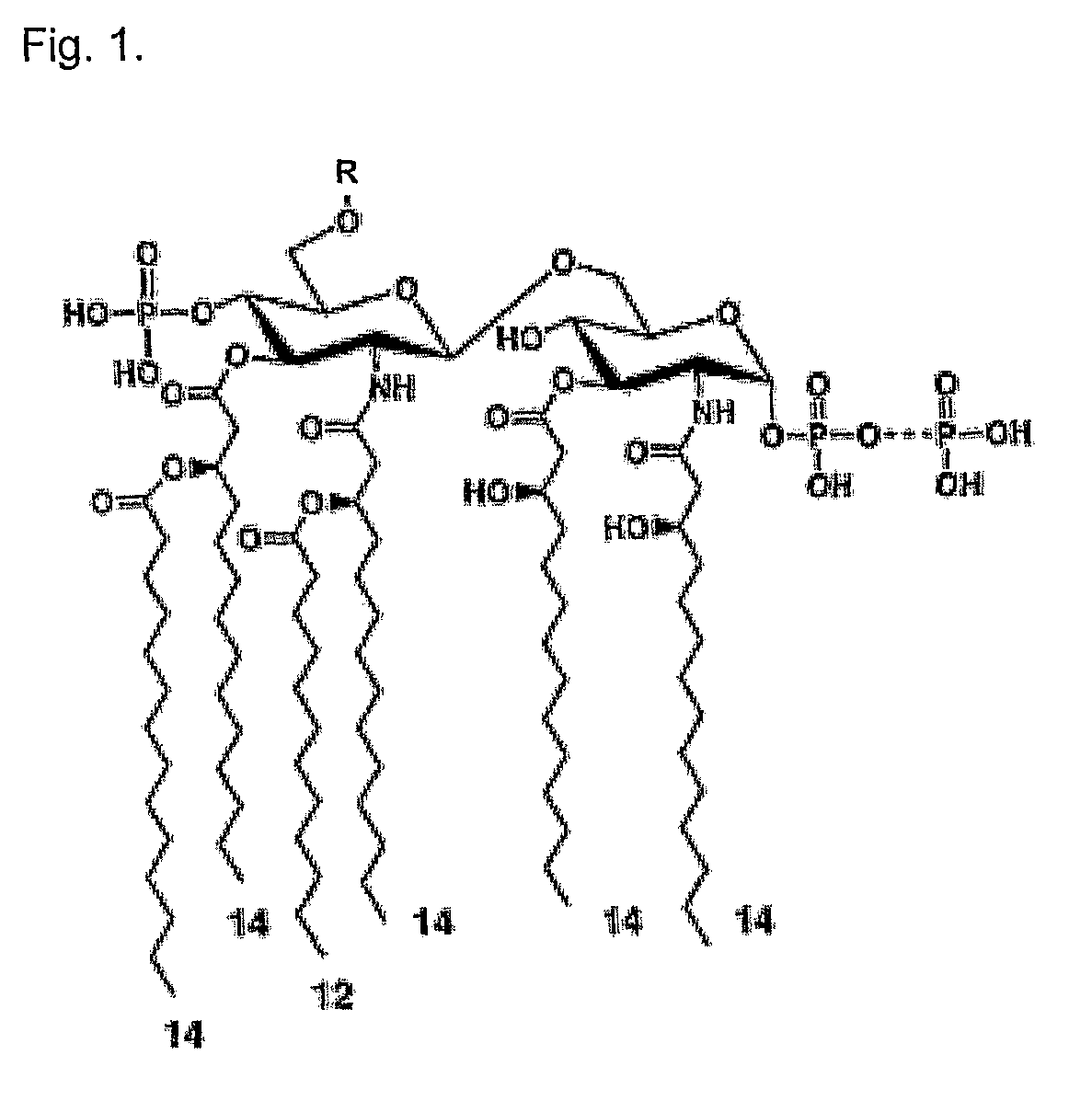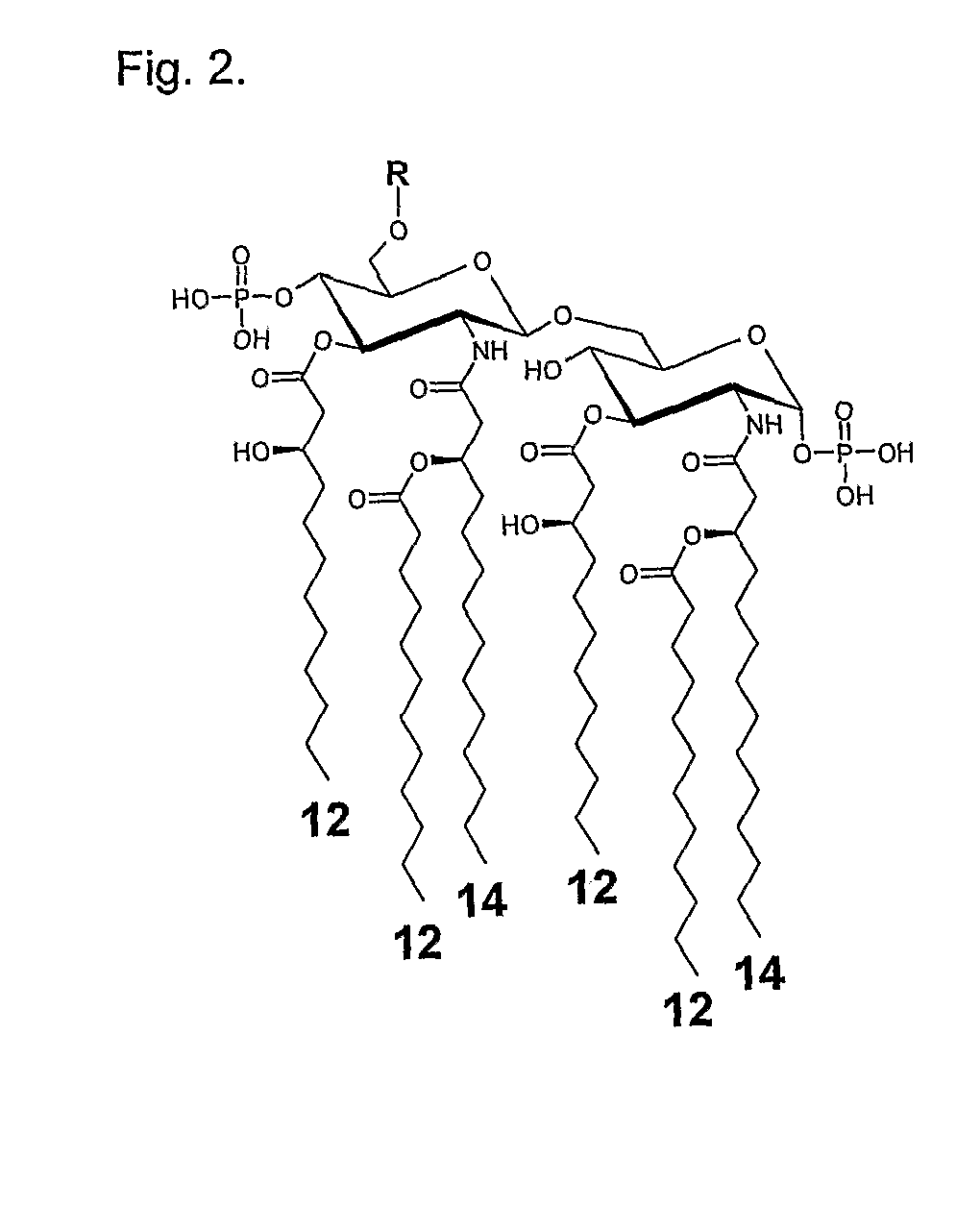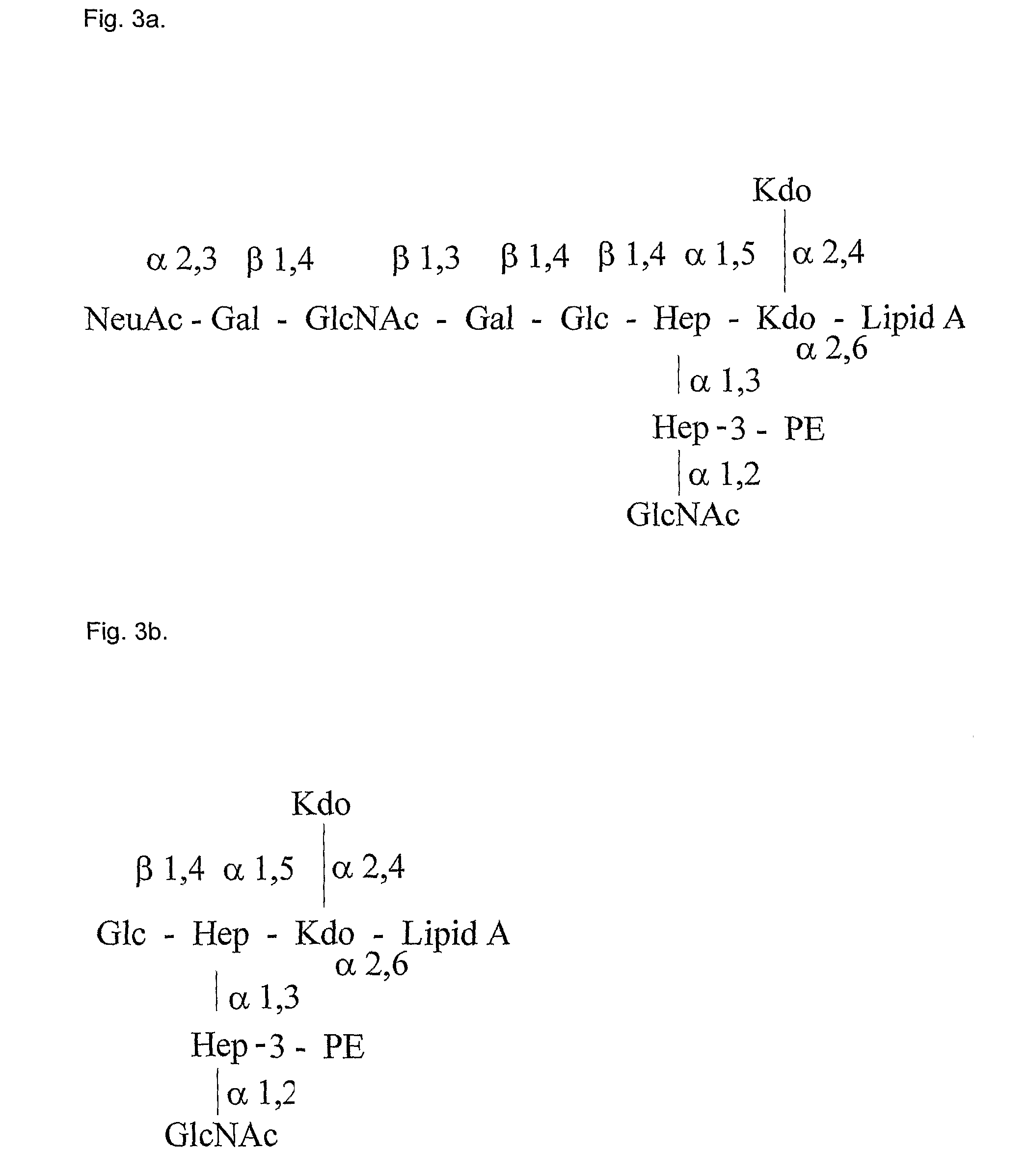Enzymatic degradation of lipid A fatty acids of bacterial LPS
a technology bacterial lps, which is applied in the field of enzyme-mediated degradation of lipid a fatty acid of bacterial lps, can solve the problems of unfavorable vaccine candidate, unfavorable antibacterial activity, and inability to detect conserved molecules that would confer protection against the vast majority of strains of a single species
- Summary
- Abstract
- Description
- Claims
- Application Information
AI Technical Summary
Benefits of technology
Problems solved by technology
Method used
Image
Examples
example 1
Ability of Dictyostelium discoideum to Grow on Several Gram-Negative Bacteria
[0120]Several Gram-negative bacteria were grown on chocolate agar and SM media plates and Dictyostelium discoideum was seeded in the corner of each plate and incubated at 22° C. in order to observe if the bacterial culture could support growth of Dictyostelium. As Table 1 shows Neisseria meningitidis, whether capsulated or non-capsulated and Mannheimia haemolytica were unable to support growth whereas Klebsiella aerogenes and Haemophilus influenzae were able to support growth.
[0121]
TABLE 1Growth of Dictyostelium on Gram-negative bacterial cellsBacteriaMediaGrowth1Neisseria meningitidis L3 galESM*Chocolate−Neisseria meningitidis L3 capsulatedSM*Chocolate−Neisseria meningitidis L3 non-capsulatedSM*Chocolate−Haemophilus influenzae 1003 lic1 lpsASM*Chocolate+++Haemophilus influenzae 1003 lic1 lpt6SM*Chocolate++Haemophilus influenzae 162SM*Chocolate++Mannheimia haemolytica losBSM+ / −Chocolate+ / −Klebsiella aerogen...
example 2
Fatty Acid Amidases (FAAI and FAAII) and the Genes Encoding FAAI and FAAII Deduced from the Dictyostelium discoideum Genome Sequence
[0122]Two fatty acid amidases were identified from the Dictyostelium discoideum genome (FIGS. 5a (SEQ ID No. 1) and 5b (SEQ ID No. 2)) by virtue of their consensus amidase sequences FIG. 6). BLASTp analysis revealed that Dd1 and Dd2 were homologous to mammalian amidase (human), (Dd1: 27% identical, 42% similar; Dd2: 32% identical, 43% similar). Additionally Dd1 and Dd2 were found to be 22% identical and 41% similar to each other. Alignment comparison between Dd1, Dd2 and human amidase was determined using a multalign software program (F. Corpet, 1988, Nucl. Acids Res., 16 (22), 10881-10890), and is shown in FIG. 6.
[0123]The genomic DNA sequences for the two genes are as shown in FIGS. 7 (SEQ ID No. 3) and 8 (SEQ ID No. 4).
example 3
Cloning and Expression of Dd1 Gene in Escherichia coli
[0124]Gene Dd1 was obtained by PCR using genomic DNA of Dictyostelium as template. Gene specific primers used were
[0125]
NRC 191(SEQ ID No. 5)(5′CTCGAGAATAGATTAACAAATATATCAAAAATTAGAAAATC 3′)andNRC 192(SEQ ID No. 6)(5′GTCGACTTATTTTAAATAATTTGGTGTAAGTGATGTAAAATC 3′).
[0126]NRC 191 and NRC 192 introduce restriction sites XhoI at the 5′ end and SalI at the 3′ end respectively of the Dd I gene. The restriction sites were designed for cloning the Dd I gene into the protein expression vector pNRC71. The PCR conditions used to amplify the Dd1 gene were as follows: —
[0127]
Denaturation -92° C. for 30 sAnnealing -52° C. for 1 minExtension -68° C. for 2 min
For 25 cycles with a final extension step for 10 min at 68° C. The PCR product obtained with the above set of primers was cloned into the pCR2.1 plasmid (TA cloning kit, Invitrogen) and transformed into E. coli strain TOP10F′ (Invitrogen). The right clones obtained with Dd1 gene insert were ...
PUM
| Property | Measurement | Unit |
|---|---|---|
| pH | aaaaa | aaaaa |
| pH | aaaaa | aaaaa |
| temperature | aaaaa | aaaaa |
Abstract
Description
Claims
Application Information
 Login to View More
Login to View More - R&D
- Intellectual Property
- Life Sciences
- Materials
- Tech Scout
- Unparalleled Data Quality
- Higher Quality Content
- 60% Fewer Hallucinations
Browse by: Latest US Patents, China's latest patents, Technical Efficacy Thesaurus, Application Domain, Technology Topic, Popular Technical Reports.
© 2025 PatSnap. All rights reserved.Legal|Privacy policy|Modern Slavery Act Transparency Statement|Sitemap|About US| Contact US: help@patsnap.com



